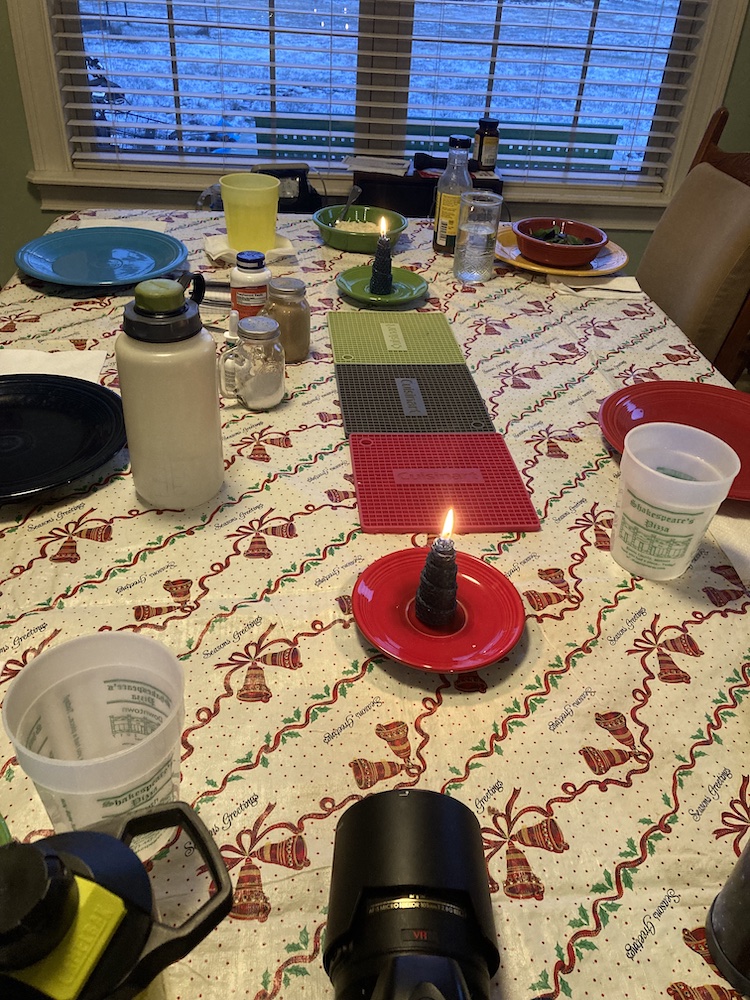
Note: I know it’s a little odd to have a post about Christmas in early February but as longtime visitors of Weekly Fifty probably know, I schedule my posts way in advance. It’s the only way I can keep this blog going :) If I didn’t have a bit of slack built in to the nature of my posts I think Weekly Fifty would have folded years ago.
When we were visiting my in-laws over Christmas I noticed a pair of unused, unlit green candles sitting on the dining room table when we first arrived. I wasn’t sure if they were holiday decorations or would serve some kind of functional purpose, but over the next two days I kind of forgot about them amidst the proverbial hustle and bustle of the Christmas season. Each of the candles was small, only four or five inches from top to bottom, and placed so unobtrusively as to be easily overlooked when the table was piled full of food, toys, newspapers, and books. Which it often was.

On Christmas Eve right before we sat down to dinner my wife’s mother struck a match and lit both candles, and immediately my first thought was that one of them would make for a really cool close-up shot. I knew we had a few minutes to spare before the food was ready so I ran to get my Nikon D750 and 105mm f/2.8 macro lens, set the aperture to f/4, made sure image stabilization was enabled, lowered myself such that my lens was level with the flame, and took this photo:

As soon as I looked at the picture on my camera’s rear LCD screen the first thing I noticed was not the candle in the foreground, but the one in the background. It was about three feet away and its flame created an amazing round light, almost like a full moon, that I had not even considered when I composed the shot. For about one or two seconds I thought about adjusting my view so as to remove that background light from the image entire, but then I realized that it would serve as an ideal complement to the flame in front.
Since everyone was ready to eat dinner I didn’t want to make the rest of the family wait while I putzed around with my camera, so I made a couple of decisions in rapid succession and fired off a bunch of shots in an effort to take something that would look good. I tried various apertures from f/4 to f/8 and focused primarily on the bright burn mark on the tip of the wick, but also on the wax in the foreground too. I also moved myself steadily closer to the flame and kept shooting, and finally I got the image you see here. It’s the last one I took and, in my opinion, the best of the bunch. I shot it at f/6.7, 1/180 second, ISO 400, and that aperture at such a close distance meant that the glowing red wick was the only thing in focus while the rest of the image, even the wax just barely in front of it, was beautifully blurry. The glowing light behind looks like a giant harvest moon just beginning to wane, and the flame angled to the right adds a sense of dynamic energy to the shot as a whole. To wit: I did not crop or rotate this shot at all, and my camera was, as far as I can tell, level with the table.
I’m really happy with how this shot turned out, and it made me think once again (it’s a lesson I continue to learn over and over and over) about how to keep the entire frame in mind when composing an image. There’s so much more than just the subject, and taking everything else into account can transform an average photograph into something much greater.



